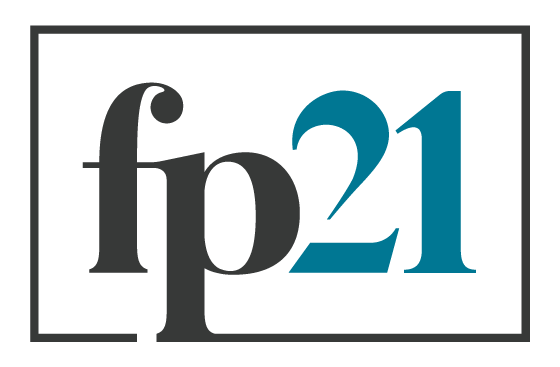Foreign Service Journal: Can the State Department integrate promising new technology without undermining the essential human aspects of diplomacy?
By: Dan Spokojny | June 2024
This article was originally published in The Foreign Service Journal.
It is fitting that on the 100th anniversary of the creation of the modern U.S. Foreign Service—brought into existence by the 1924 Rogers Act—an entire FSJ issue is dedicated to the future of diplomacy, specifically how the rapid advances in artificial intelligence (AI), data collection and analysis, and scientific thinking can improve the conduct of international relations.
Perhaps no topic is more enduring in the pages of this magazine’s century of publication than how to improve the State Department and its diplomacy. It is the gift (and burden) of all public servants to be afflicted by visions of a better world, to be dissatisfied with the status quo but also motivated toward improvement.
Yet many of us suspect that we face an inflection point today. Few other moments in modern American history have presented such a rising tide of international challenges at a time when the role of the State Department seems less clear. The next hundred years of American diplomacy must look different from the last. But how?
This edition of the Journal offers no easy answers. Written by innovative practitioners pushing the boundaries of their field, the articles share an underlying question: With an exponential increase in the complexity of the international environment and the simultaneous advance of new technologies, how can we improve the quality of our foreign policy?
Two articles in this collection, by Zed Tarar and Evanna Hu, challenge the State Department to think harder about its appropriate role in shaping the rapidly developing landscape of AI policy for the rest of the world. They examine AI as a policy question unto itself, rather than an internal tool. Another two articles, by Paula Osborn and Paul Kruchoski, focus on each of the authors’ experiences developing new tools to improve the quality of knowledge and decision-making in foreign policy. They evaluate the promise and peril of using AI tools and suggest that good evidence and data may be a prerequisite for improving American foreign policy.
I encourage you to read each of these articles carefully; they’re all fantastic.
Preserving the Essential Human Aspects of Diplomacy
I should admit my bias here. I have argued in these pages before that the State Department would benefit from an upgraded culture of decision-making, that diplomacy should be “more science and less art,” and I run a think tank dedicated to that mission.
But just as it would be a mistake to ignore the promises of scientific advancements, it would also be dangerous to disregard the “art of diplomacy.” Any experienced diplomat will tell you that navigating the international environment requires more than cold, hard calculations. Effective diplomacy requires creativity, a strong moral compass, a keen sense of politics, empathy, and a knack for building trusted relationships with people across cultures. These fundamentally human qualities need to be nurtured and celebrated in the hallways of Foggy Bottom.
So, while we look toward the future of diplomacy, it is worth gazing over our collective shoulders to make sure that we do not leave behind what makes diplomats and the Foreign Service so great.
Any new approach in diplomacy must be judged by its ability to help policymakers better understand the world.
Here are four areas in which foreign policy must remain an inherently human enterprise. Just as an artist interprets the world through their unique lens, capturing the essence of a scene with their brushstrokes, skilled policymakers practice their art to shape a more just and prosperous world.
Defining National Interests. Every masterpiece starts with a vision. In foreign policy, this vision translates to defining national interests. This requires a deep understanding of our nation’s history, culture, and politics—including the priorities of the president and Congress. National interests emerge from a complex mosaic of security, economic, and normative priorities. These priorities constantly evolve with the changing global landscape. The artful diplomat must be able to identify these priorities, understand their interrelationships, and prioritize them strategically, making informed decisions about which brushstrokes to use and where to focus their efforts.
Setting Goals. The world is not a coloring book with predrawn lines. Just as an artist explores an infinite variety of colors, mediums, and techniques, foreign policy demands creative solutions. Traditional approaches may not always suffice in a constantly evolving global landscape. One must constantly think outside of the box. This requires intellectual agility, the courage to challenge orthodoxy, and the willingness to embrace the unexpected. For instance, as scholar Naazneen Barma and her colleagues explain: “Scenario analysis constitutes the art of juxtaposing current trends in unexpected combinations in order to articulate surprising and yet plausible futures, often referred to as ‘alternative worlds.’”
Living Our Ethics. A masterpiece reflects not just the artist’s skill but also vision and values. Foreign policy fundamentally requires moral considerations. Policy practitioners must balance light and shadow, carefully navigating the ethical complexities of international interactions. This involves recognizing the human cost of decisions and striving for solutions that uphold core values even in the face of trade-offs. This requires moral clarity, empathy for the diverse stakeholders involved, and the courage to make difficult choices.
Interpersonal Skills. Foreign policy is ultimately about people. The art lies in building relationships, forging alliances, and navigating the intricate dance of diplomacy. The foreign policy practitioner must be a skilled communicator, their words carefully chosen to bridge cultural divides and build trust. They must possess a deep sense of empathy for their allies and opponents and the ability to appreciate the nuances of human emotions and motivations. This requires emotional intelligence, cultural sensitivity, and the ability to build genuine connections across diverse cultures and perspectives. Our public diplomacy colleagues call this critical work bridging “the last three feet.” Any good manager will tell you that interpersonal skills are just as necessary for building relationships with one’s colleagues as with one’s foreign interlocutors.
Past and Future Must Work Together
With these four classic brushstrokes, practitioners can begin to master the art of foreign policy, shaping the international landscape with creativity, empathy, and a deep understanding of the human condition. These domains also constitute a “danger zone” into which technologists and future-minded reformers should tread carefully.
Yet there’s also great risk in letting one’s comfort with the status quo prevent one from experimenting with new approaches. Overconfidence in one’s artistry can blind a person to the weaknesses of the status quo and the opportunities provided by new approaches. In a more competitive, multipolar world, sharpening the tools of diplomacy will be essential to achieving our foreign policy goals and securing our national interests.
One of the strengths in this set of articles is the authors’ eagerness to experiment and to learn from successes and failures along the way. Ultimately, any new approach in diplomacy must be judged by its ability to help policymakers better understand the world, select policy options more likely to achieve their goals, and support more effective foreign policy. Any new tool or approach must empower—not dampen—our best human impulses.
The future of diplomacy is deeply uncertain. Some believe emerging technologies like AI can usher in an unprecedented age of peace and prosperity. Others fear that new technology poses an existential threat to our species and must be contained.
No matter what the future holds, the United States—and everyone on this planet affected by our actions—deserves the best possible State Department. Judging by the articles in the following pages, I am optimistic about its future.
Published today: An entire edition of The Foreign Service Journal focused on AI in diplomacy! At issue: Does AI hold promise or peril for foreign policy and the U.S. Department of State?
As a member of the editorial board for the FSJ, I was proud to help organize this innovative edition. What makes this collection of authors so unique is the insider perspectives of the seven authors: three active Foreign Service Officers, one former FSO (me), two Civil Servants, and the CEO of an AI company:
My article introduces the edition and asks: Can the State Department integrate promising new technology without undermining the essential human aspects of diplomacy? https://lnkd.in/edF52wZR
As Director of the innovative Public Diplomacy office of Policy Planning and Resources, Paul K. is spearheading some of the most interesting and forward-leaning work at the Department. His article is a MUST READ. He explains that "making AI work at State requires challenging the culture that underlies the department’s siloed structure." https://lnkd.in/ee7gKpGt.
Paula Osborn, who was just appointed as the Deputy Chief Data and AI Office at State following her success in leading the data program at the U.S. Department of State - Bureau of International Organization Affairs. She offers an excellent and illuminating case study of data and AI adoption in that Bureau. https://lnkd.in/eMjZwR3m
Zed Tarar offers a great primer for AI policy, addressing some really fundamental questions, including: How to think about AI? Is AI a national security threat? and Are global AI rules necessary? https://lnkd.in/e-8FpsYP
Evanna Hu warns that "AI will change our social contract nationally and with the international community." She makes a powerful case for the State Department to help develop a vision of how AI will be integrated into our democratic society. https://lnkd.in/ekh9wG-e
Bonus: Eric Bernau's article envisions an algorithm that can improve the job assignment process, helping better match skills with job requirements. https://lnkd.in/e9YdY_wP And Darrow Godeski Merton's submission (which took second place in the annual writing contest) discusses the promise of AI for improving efficiency at State. https://lnkd.in/ekdeidvm
👉 What struck me most about these set of contributions is that each of them care about strong US foreign policy first and foremost. None argue for AI and data for their own sake, and none are pollyannaish or hyperbolic. These folks aren't run-of-the-mill armchair prognosticators. These are practitioners with skin in the game for US foreign policy. I hope you learn as much from these articles as I did.


